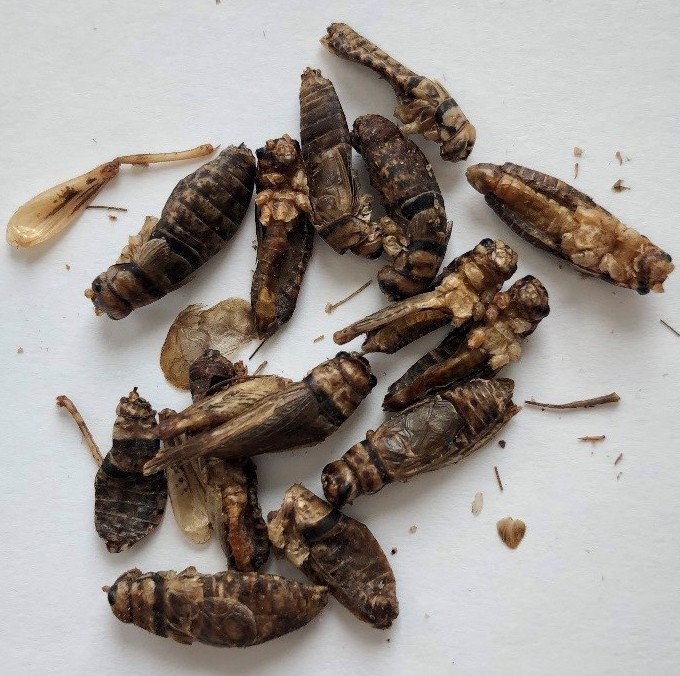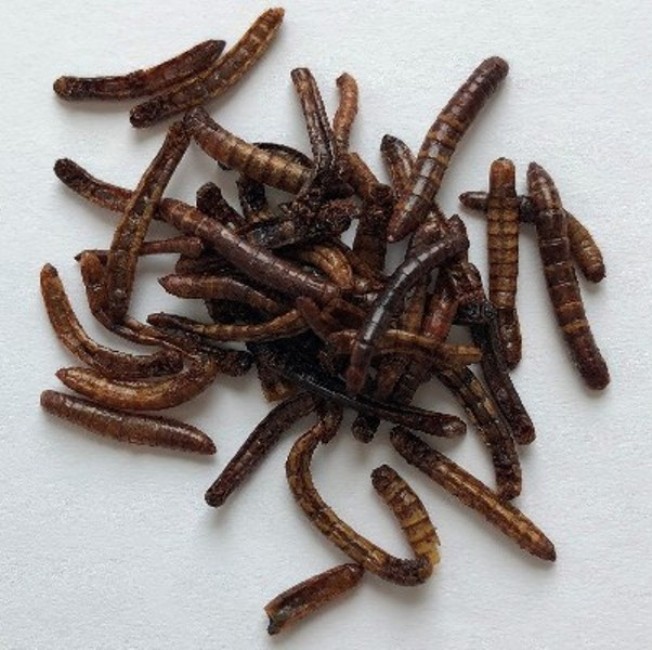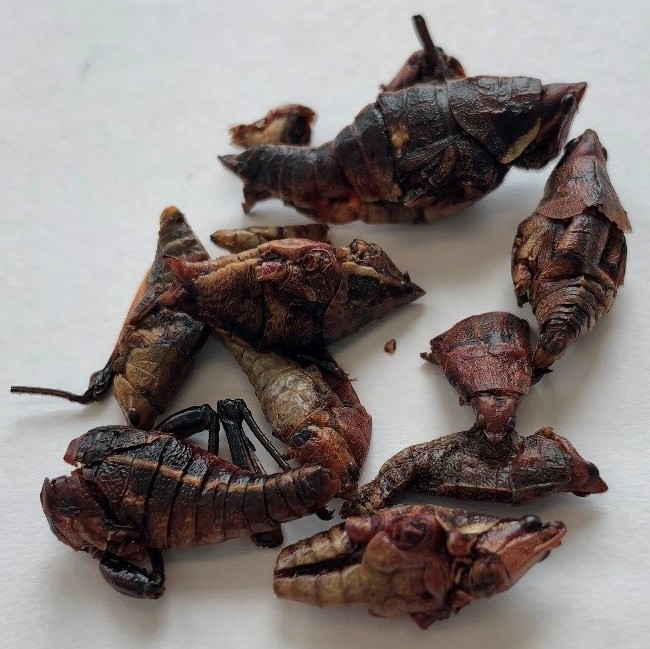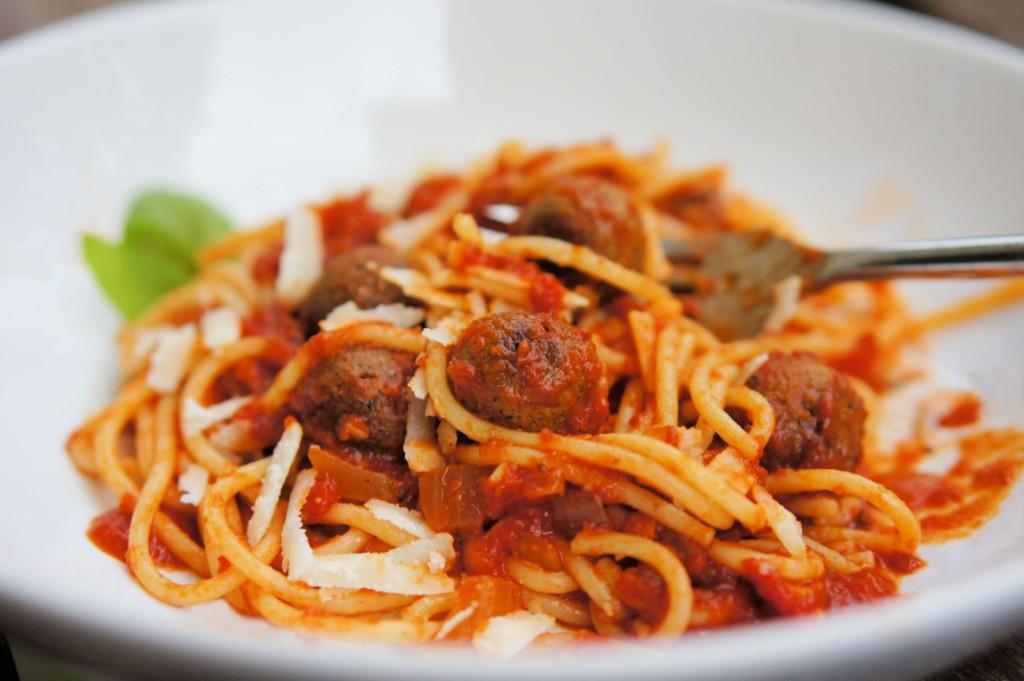Ever think your next meal could be an insect? Neither did I until I was asked to provide a risk assessment for a charity about feeding cricket powder to undernourished children in Cambodia.
From this I got immersed into the whole “new” world of food (that’s actually quite old), getting over my fear, yuck and “eww” and eventually trying some cooked mealworms and crickets (no they weren’t covered in chocolate). Really…it wasn’t bad at all. They didn’t taste like chicken, but they did taste like nuts and burnt toast!

Eating insects is formally known as Entomophagy and it’s not a new phenomenon. It’s been around for centuries and is a traditional practice in non-Western nations such in Africa, Latin America, Asia and the Pacific.
There are over 2,000 different types of edible insects, some of which you might have heard of and even seen. For example: cockroaches, dung beetles, grasshoppers, sand crickets, red locusts, dragonflies, fruit flies, cicadas, honey bees, silk moths and silk moth pupae, and bird-eating spider.
Given the popularity of alternative protein sources and sustainable diets, there is increasing interest in edible insects from businesses and consumers in Canada, the United States and Europe. Speciality producers have emerged online and in stores selling products such as:
- Bolognese sauce made from crickets and mealworms
- Textured insect protein that can be used in cakes, tofu and act as ground meat
- Insect powders that easily dissolve in liquid to form smoothies and other beverages common in sports nutrition
- Assorted varieties of seasoned dried insects that resemble flavours of popular potato chips (e.g., salt ‘n’ vinegar crickets).
In fact, at least one major grocery store chain in Ontario now sells cricket powder and whole roasted crickets that are produced by an Ontario farm.
Why consider munching on mealworms or crunching on crickets?

There are a few reasons insects are an everyday food in some nations and are rising in popularity in others:
1. Environment/sustainability
Insects require little land for harvesting, they consume less water than meat protein sources and produce fewer greenhouse gas emissions per kilogram. For example, crickets require 13 times less water than cattle. Mealworms produce 10 to 100 times fewer greenhouse gas emissions per kilogram than pigs.
Not only can you raise and harvest insects on small spaces like your kitchen countertop, they actually help reduce environmental contamination. Insects are very efficient at taking the feed they’re given and converting it into protein (for those of you who raise food producing animals, you know this aspect is very important to your bottom line).
Not only are insects eco-friendly but they have the potential to meet the demand of a growing population while contributing to food and nutrition security.
2. Nutrition

I’m asked all the time, “how nutritious are edible insects?” The answer is it depends on the species and its stage of development (i.e., larva vs. adult). They contain about 20-76 percent protein by weight; have all essential amino acids (making a complete protein); are rich in zinc, iron, copper, vitamins B1, B2, and B12; and contain a good fat content of 10-60 percent.
I love this quote as a bit of food for thought: “…all over the world money worth billions are spent every year to save crops that contain no more than 14% of plant protein by killing another food source (insects) that may contain up to 75% of high-quality animal protein.” - Environmental Engineer M. Permalatha, in a 2011 review of energy efficient food production.
From this you can see why insects are a staple in some non-Western diets and are considered a good alternative protein source here in Canada.
3. Diverse tastes
When trying something new, you’re usually asked afterwards what it tasted like. People have said insects taste like many different foods, including fatty brisket with skin, fish, caviar, herring, mushrooms, apples, pine seeds/nuts, raw corn, friend potatoes and wholemeal bread.
Are insects safe to eat?
Food safety is my passion and I would like to take the lessons we now know about our traditional protein foods—eggs, chicken, beef, pork and fish—and apply them to edible insects, so they’re safe for you and your family to eat. Here are a few reasons food safety is important when it comes to eating insects.

Allergens
For most us the risk to allergic reactions from eating edible insects will be low, but if you have allergic reactions to crustaceans (e.g., shrimp, crab, lobster, barnacles, crayfish) or house dust mites, the risk is high. So please err on the side of caution.
Cooking and preparing insects
From a food safety standpoint, treat insects as you would any food in your home. Make sure you have proper hygiene (including handwashing), avoid cross-contamination and use a combination of heat treatment/cooking steps to ensure that the insects are safe from potentially harmful bacteria. For insects this means:
- Boiling or blanching for 10-15 minutes at 90ºC
- Roasting or sterilizing using a brine solution, heating, or lactic acid fermentation,
- Freeze-drying or grinding
You probably already take some of these steps for chicken and other meats so you can easily do this for insects as well.
Edible insects have the potential to be considered a health food, and they may just be on your dinner plate soon.
